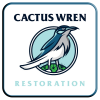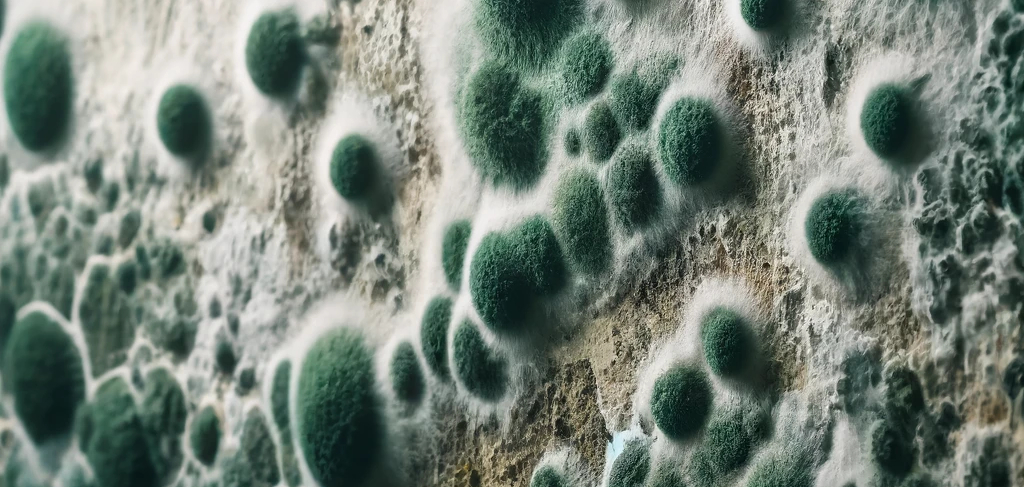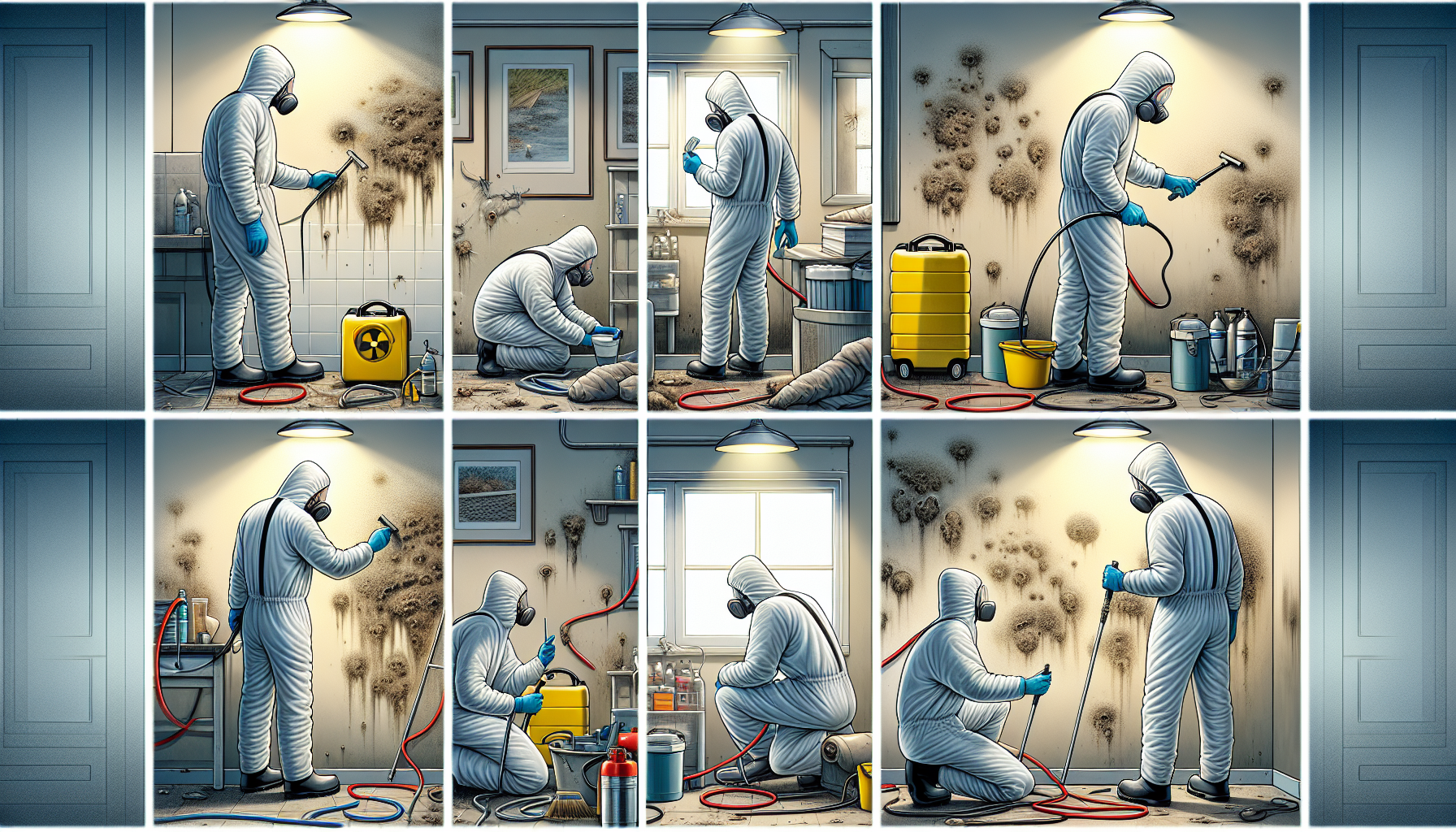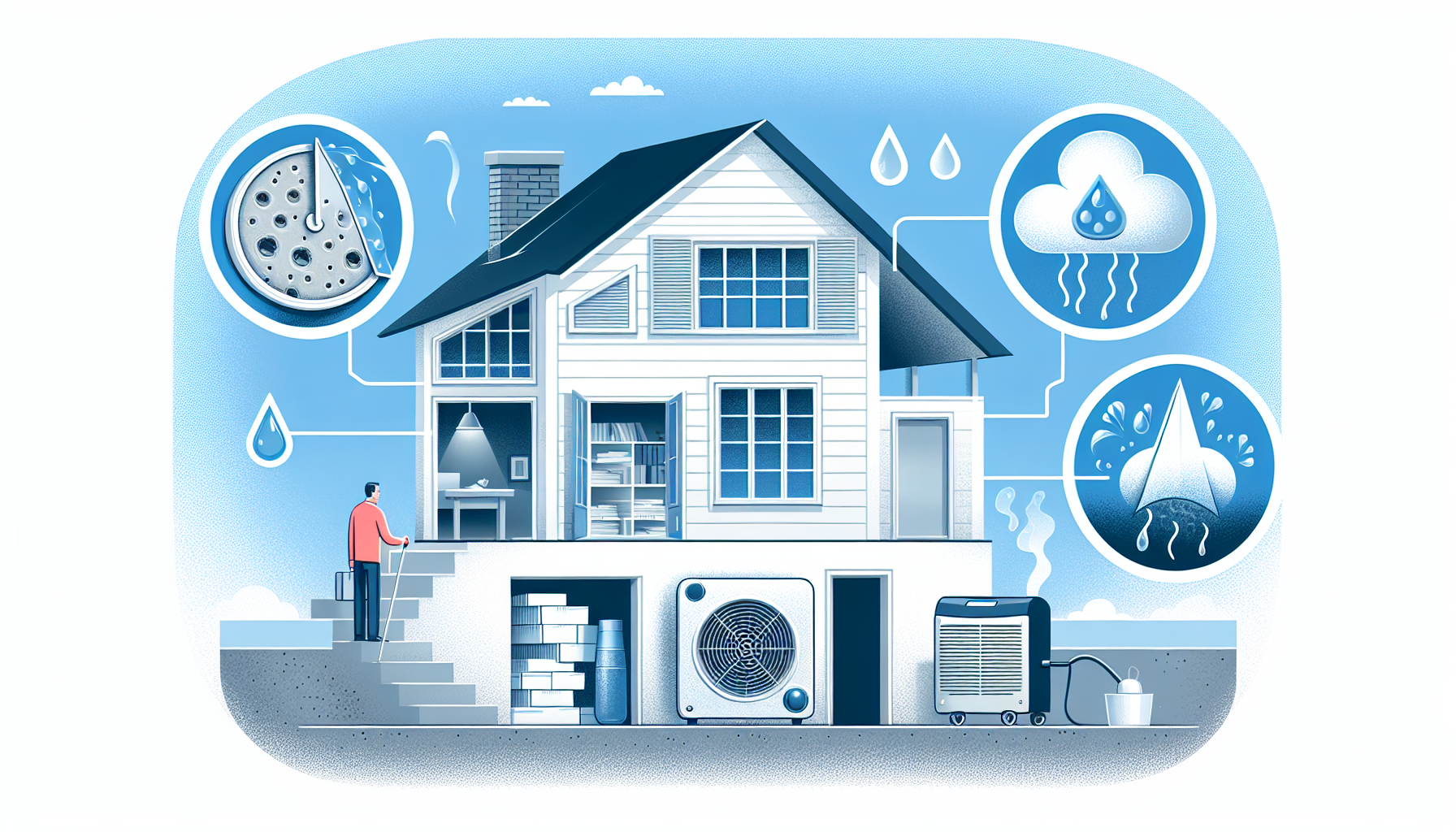
Cactus Wren Restoration
Gilbert, Arizona
Mold Remediation and Removal
-
1497 E Baseline Rd STE 111
Gilbert, AZ 85233 - (602) 600-5899
- office@cwrestoration.com
- Office Hours M-F 8:00am - 5:00PM
- Emergency Hours: Sun-Sat 24/7
Mold Remediation and Removal
For Service Call or Send us a message
in the form below
Is mold invading your home? Effective mold remediation can halt the damage and safeguard your health. Dive into this comprehensive guide for the essential steps to remove mold, insights on when to call experts, and tips to keep mold from returning—all without wading through fluff or jargon.
Table of Contents
ToggleKey Takeaways
Mold remediation is essential for preventing health risks and structural damage, making a professional service critical for handling significant infestations.
The mold remediation process involves inspection, containment, removal of infested materials, and strict safety measures to ensure thorough and safe mold eradication.
Costs for professional mold remediation vary based on infestation size and complexity, with average costs around $3,500, but prevention practices can help maintain a mold-free environment.
Understanding Mold and Its Risks

Think of mold as unwelcome house guests. They’re fungi that decompose plant and animal matter, thriving in environments that offer moisture and organic material. But unlike your typical house guests, molds can spur allergic reactions, respiratory symptoms, and even exacerbate existing health conditions, especially in individuals with weakened immune systems.
This is why mold remediation is not just crucial but necessary. It safeguards against severe health issues and prevents structural damage to buildings. So, when dealing with a mold infestation, it’s best to enlist the help of professional mold removal services.
The Mold Remediation Process

Mold remediation is a bit like a well-orchestrated dance. It involves a series of precise, carefully executed steps.
Let’s explore this in-depth, breaking down the stages of the mold remediation process.
Initial Mold Inspection
Mold inspection is the first act in our remediation dance. It’s not always easy to spot mold growth. Sure, sometimes mold presents itself as discolored or slimy patches, even giving off a musty smell. But what about when mold chooses to play hide and seek?
That’s when professional mold testing comes to the rescue! Mold removal experts utilize advanced testing methods to detect and confirm hidden mold infestations. They don’t just look for visible signs, but also hidden water sources that contribute to mold growth. In essence, mold inspection is like a treasure hunt, but instead of gold, we’re looking for mold spores.
Containment Strategies to Prevent Spore Spread
With the mold identified, it’s time to prevent it from spreading. Containment strategies are crucial to keep mold spores from infiltrating other parts of your home during remediation. Think of it as putting a fence around a wild animal so it can’t escape.
The mold remediation process involves:
Sealing the room undergoing remediation from the rest of the house.
Depending on the size of the mold contamination, different containment strategies are employed, ranging from limited containment for smaller areas to full containment for larger ones.
Negative air pressure and thorough sealing of vents, doors, and openings ensure that the “wild animal” stays within its fence.
Removing Mold-Infested Materials
Once the mold is contained, it’s time to remove it. During mold remediation, porous materials like carpeting, drywall, and insulation often have to be removed and disposed of. Why, you might ask? Well, these materials are like a buffet for mold – they provide the perfect environment for mold to thrive.
So, removing and disposing of mold-infested materials is a key step in the mold remediation process. It’s not just about cleaning; it’s about ensuring complete eradication of mold contamination. This way, you don’t just get rid of the mold you can see but also the mold that’s lurking out of sight.
Safety Measures During Mold Removal
Mold removal is not a task to be taken lightly. It involves a significant amount of safety measures. Specialized equipment like HEPA vacuums and air scrubbers are used to maintain air quality during the mold removal process, following guidelines set by the Environmental Protection Agency.
But it doesn’t stop at equipment. Individuals involved in the mold remediation process are advised to wear protective gear such as N-95 respirators, non-latex or nitrile gloves, and goggles to safeguard against mold exposure. In essence, mold remediation is not just about removing mold but doing it safely and effectively.
Professional vs. DIY Mold Remediation
When dealing with mold, you might wonder: Can I handle this myself, or should I call in the pros? DIY mold remediation is feasible for small areas (less than 10 square feet) and situations without serious respiratory risks. However, when it comes to large mold infestations, DIY is not recommended due to the time consumption and health risks involved.
Professional mold remediation, on the other hand, is thorough, quick, and safe, making it the preferred option for significant mold problems or mold that’s spread into HVAC systems. But remember, this expertise comes at a cost, which can run into thousands of dollars depending on the size and severity of the mold issue.
Cost Factors in Mold Remediation
The cost of mold remediation can vary greatly. Several factors come into play, including the size and accessibility of the mold infestation, the types of materials involved, and special circumstances such as the presence of mold in HVAC systems.
Small mold infestations typically range from $500 to $1,000 to remediate, while larger problems can escalate to around $30,000. Professional remediation, while more costly than DIY methods, provides a more thorough and safer approach, with the average mold remediation costs being around $3,500. Labor accounts for approximately 60% of the total cost in professional mold remediation services.
Beyond remediation, homeowners should also budget for repair costs, which are an additional expense factored into the total project cost. So, while the cost of mold remediation might seem daunting, it’s important to consider the bigger picture – the health of your home and your family.
Preventative Practices to Keep Mold at Bay

Prevention, as they say, is better than cure. And this holds true with mold as well. Maintain indoor humidity levels below 50% and ensure proper ventilation using exhaust fans that vent outside, particularly in kitchens and bathrooms, to inhibit mold growth and effectively kill mold.
In case of flooding, drying out homes within 24-48 hours is crucial to prevent mold from proliferating. If items cannot be thoroughly dried and cleaned within this timeframe, it’s best to discard them to prevent mold growth. Regular cleaning of bathrooms with mold-killing products can also prevent mold. By following these preventative practices, you can keep mold at bay and ensure a healthy living environment.
Why You Should Hire Cactus Wren Restoration for your Mold Issues
When it comes to mold remediation, you want to have the best team on your side. That’s where Cactus Wren Restoration comes in. Our technicians have certifications from the Institute of Inspection Cleaning and Restoration Certification (IICRC) or the Indoor Air Quality Association (IAQA), ensuring that you’re dealing with knowledgeable and experienced professionals.
With over 30 years of combined experience dealing with mold, we are well-equipped to handle your mold issues. Here’s what we offer:
Comprehensive liability insurance and specific mold insurance to protect homeowners against any accidents during the remediation process
A detailed estimate of costs, scope of work, equipment used, and project duration
A warranty to ensure accountability and quality of service
You can trust our mold removal company to provide the best mold removal services, offering professional and reliable mold remediation services for your ceiling tiles.
Cactus Wren Restoration: Your Partner in Mold Solutions
Cactus Wren Restoration is not just a mold remediation company; we’re your partner in mold solutions. We specialize in mold remediation services in Gilbert, AZ, and the Mesa East Valley area, focusing on creating a safe and healthy living environment for our clients.
With a swift 24/7 emergency response service for mold-related issues, we ensure rapid action and prevention of further damage. Our customer-centric approach ensures personalized service throughout the entire mold remediation process.
As a locally owned and operated business, we’re not just serving clients – we’re serving our community.
To wrap things up, it’s evident that mold is more than an unsightly issue – it’s a health and structural hazard. But with professional mold remediation, you can effectively eliminate mold and prevent its recurrence. Cactus Wren Restoration is a trusted partner in this journey, providing expert services to keep your home safe and healthy.
Mold Remediation FAQ's
Mold remediation is the process of removing mold and preventing its return. It involves identifying the source of moisture, containing the affected area, removing contaminated materials, and cleaning and sanitizing to eliminate mold spores.
Signs you might need mold remediation include:
Visible mold growth: Black, green, or white patches on walls, ceilings, or floors.
Musty odor: A persistent, unpleasant smell.
Water damage: Previous or ongoing leaks or floods.
Health symptoms: Allergic reactions, respiratory issues, or other symptoms when indoors.
Mold grows in areas with excess moisture and poor ventilation. Common causes include:
- Leaking roofs, pipes, or windows
- Flooding
- High humidity
- Poor drainage around foundations
For small areas (less than 10 square feet), you can clean mold with appropriate precautions, such as using protective gear and proper cleaning agents. However, larger infestations require professional remediation to ensure complete removal and prevent recurrence.
- Our mold remediation process typically includes:
Inspection and assessment: Identifying the extent and cause of mold growth. - Containment: Isolating the affected area to prevent the spread of mold spores.
- Air filtration: Using air scrubbers and HEPA vacuums to remove mold spores from the air.
- Removing mold and contaminated materials: Cleaning and removing affected materials.
- Cleaning and sanitizing: Using specialized treatments to clean surfaces and prevent future growth.
- Restoration: Repairing or replacing damaged structures.
The time required depends on the extent of the infestation and the size of the affected area. Small projects might take a day or two, while larger, more extensive projects can take a week or more.
Insurance coverage for mold remediation varies by policy. Typically, if mold is a result of a covered peril, such as a burst pipe, it may be covered. It’s important to review your policy and discuss your coverage with your insurance provider.
Control moisture: Fix leaks promptly and use dehumidifiers in damp areas.
Improve ventilation: Use exhaust fans in bathrooms and kitchens.
Maintain gutters and downspouts: Ensure proper drainage away from the foundation.
Monitor humidity levels: Keep indoor humidity below 60%.
Exposure to mold can cause:
Allergic reactions: Sneezing, runny nose, red eyes, and skin rash.
Respiratory issues: Coughing, wheezing, and shortness of breath.
Aggravation of asthma: Increased asthma attacks in people with the condition.
Other health effects: Headaches, dizziness, and fatigue.
Mold can return if the source of moisture is not addressed. Ensuring proper repairs and maintaining a dry environment are crucial to preventing future mold growth.
Do not disturb the area: This can spread mold spores.
Contact a professional: A licensed mold remediation expert can assess the situation and recommend the appropriate actions.
Look for certifications such as:
IICRC (Institute of Inspection, Cleaning and Restoration Certification): Ensures adherence to industry standards.
OSHA (Occupational Safety and Health Administration): Indicates proper safety practices.
EPA (Environmental Protection Agency): Demonstrates compliance with environmental regulations.
For any further questions or immediate assistance, don’t hesitate to reach out to our expert team at Cactus Wren Restoration. We are dedicated to restoring your property to a safe and healthy condition.
Mold is a fungus that thrives in moist environments and can lead to allergic reactions, respiratory symptoms, and structural damage to buildings.
Mold remediation costs can range from $500 to $30,000 depending on the size of the infestation and specific factors involved. The cost varies widely based on the extent of the problem and the materials affected.
To prevent mold growth in your home, maintain indoor humidity levels below 50%, ensure proper ventilation, quickly dry out areas after flooding, and regularly clean with mold-killing products.
Our Other Restoration Services
Biohazard Cleanup
Asbestos Abatement
Reconstruction Services
